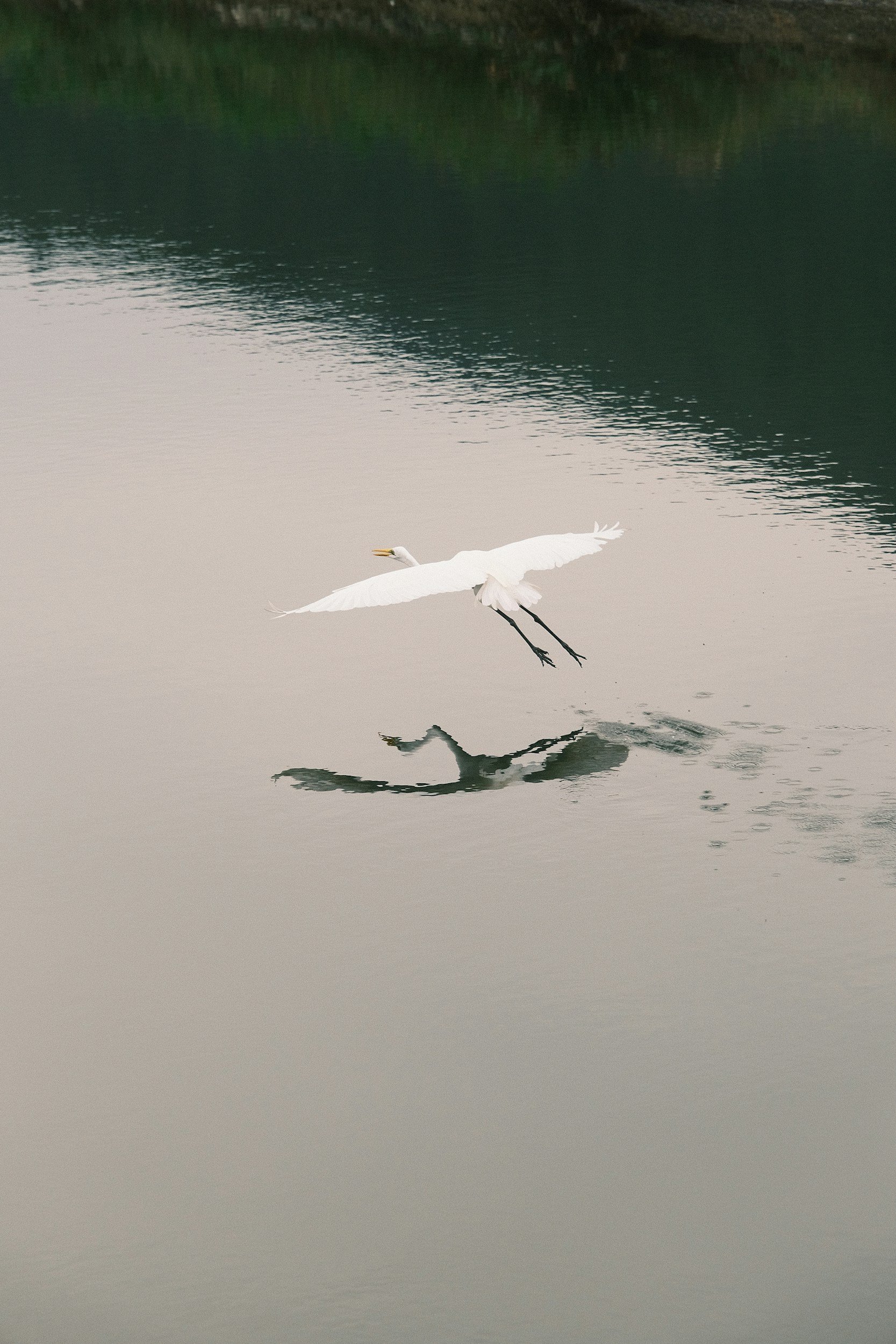
Great Egret
Egrets in Florida: Conservation, Behavior, and Future Outlook
Egrets are a group of wading birds of the heron family (Ardeidae), with their elegant appearance, long necks, and slender bodies. There are several species of egrets, which are found in Florida, including the great egret (Ardea alba), snowy egret (Egretta thula), and reddish egret (Egretta rufescens). In total, about thirty egret species exist around the world: some are common and do well in Florida's wetlands, estuaries, and coastal habitats where they play an important function in the health of their ecosystems. Although their numbers have recovered from historical losses, egrets continue to face threats from habitat destruction, pollution, and climatic perturbations.
Conservation Success and Challenges
Conservation of egrets has been one of those modern-day success stories in wildlife management.
Throughout the 19th and early 20th century, there was a serious amount of hunting for the feathers, since these were very sought-after by the fashion world. The establishment of the Migratory Bird Treaty Act of 1918, among other laws, as well as the establishment of societies such as the National Audubon Society, led to the curbing of the plume trade, affording protection to egret populations from decimation. Today, habitat loss and degradation remain the major threats to egrets in Florida. The draining of wetlands for agriculture, urban development, and flood control has greatly reduced the availability of suitable habitats. Pollution through agricultural runoff disrupts food chains in these environments, while rising sea levels threaten coastal nesting and feeding areas. Egret species are also susceptible to human disturbances during the breeding season as most colonies occur in very conspicuous locations. Human-induced disturbances may result in nest abandonments and overall reduced reproductive success.
Species Found in Florida
1. Great Egret (Ardea alba)
The great egret is the largest and most recognizable egret in Florida, with pure white feathers, a long, yellow bill, and black legs. It is a symbol of conservation success and serves as the logo for the National Audubon Society.
2. Snowy Egret (Egretta thula)
Smaller in size, black bill and legs, with bright yellow feet, the snowy egret is an active feeder, and quite striking. This species was among those hardest hit by the plume trade.
3. Reddish Egret (Egretta rufescens)
The reddish egret, found in coastal areas and salt flats, is less common than other species. It is known for its two color morphs—reddish-brown and white—and its dramatic, energetic feeding style.
Behavior and Ecology
Egrets are wading birds that forage in shallow waters, feeding on fish, amphibians, crustaceans, and insects. They adopt different hunting methods from standing still, waiting to ambush prey, to active pursuit and chasing of fish. Among them, the Snowy Egret and the Reddish Egret are noted for their dynamic and acrobatic feeding behaviors.
During the breeding season, egrets form colonies-called rookeries-and can often be seen nesting amongst other wading bird species. The elaborate courtship displays by the males-which include much bowing, bill snapping, and fluffing of plumage-are used in the attraction of mates. Nesting, which is done by both parents on eggs and young, usually occurs on the tree branches or in bushes.
Egrets depend on wetland habitats, which again support a wide range of biodiversity. They are usually good indicators of the health in these ecosystems since they are sensitive to changes in water quality and the availability of prey.
Future of Egrets
The future of egrets in Florida depends on the preservation and restoration of wetland habitats. Initiatives such as the Comprehensive Everglades Restoration Plan are focused on restoring the flow of water in the Everglades and other key areas, benefiting not just egrets but whole ecosystems. Protecting rookeries and feeding areas from disturbance through zoning regulations and conservation easements is critical.
Efforts to improve water quality, reduce nutrient pollution, and combat invasive species such as hydrilla and Brazilian pepper will go further in supporting the egret populations.
Public education and ecotourism also play a significant role in egret conservation. Birdwatching programs and educational campaigns can be used to develop appreciation for these birds while generating support for habitat protection.
It is symbolic in many ways of the hurdles and successes of conservation that egrets are an iconic member of Florida's avian community. With further emphasis on habitat preservation, wetland restoration, and public awareness, these majestic birds can continue to flourish, serving as ambassadors to Florida's rich biodiversity.

